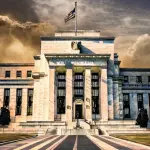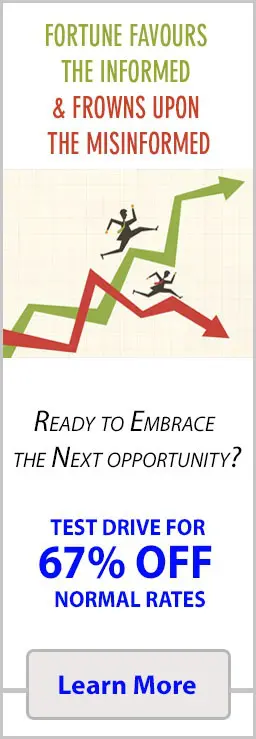Blood in the Order Book: The Real Doctrine of Anchoring Behavioural Finance
Apr 24, 2025
Panic is a contagion—an electrical storm in the collective brain that incinerates fortunes faster than a match to gasoline. You think you’ll see it coming, that you’ll be rational when the screens bleed red. You won’t. By the time you taste the metallic tang of fear in your mouth, the stampede has already begun. This is the underworld of anchoring behavioural finance: the trapdoor beneath every price, every consensus, every “safe” trade. Blink, and you’re prey.
Neural Infernos: The Anatomy of Panic
Every market implosion is the same neurological wildfire. The limbic system—ancient, ruthless—hijacks reason. Mirror neurons flare, spreading terror from trader to trader like a pandemic of anxiety. In the heat of chaos, anchoring behavioural finance becomes a death sentence: the mind latches on to the last “normal” price, the previous familiar pattern, and refuses to let go as the world shifts beneath it.
Cognitive dissonance crackles in the air. In 2008, Bear Stearns vaporised in a weekend; the familiar anchors—housing prices, blue-chip stocks, trust in the system—collapsed in a heartbeat. In the dot-com crash, billion-dollar companies went to zero while investors clung to broken narratives. COVID’s opening salvo erased trillions in days; panic was viral, spreading through headlines, Twitter feeds, ETF baskets. Anchoring behavioural finance didn’t just fail—it fueled the inferno, chaining minds to obsolete realities as prices cratered.
These aren’t just stories. They’re warnings are seared into the DNA of every survivor. The lesson: when the herd runs, anchors drag you under. Escape demands a new geometry of thought—vector, not line; movement, not memory.
Predators in the Static: The Wolves Move Differently
Most freeze. A few hunt. The wolves are not born—they’re forged in crisis, sharpened by anomaly. Livermore watched the ticker tape with predatory detachment, exploiting panic as others drowned. Templeton bought when the world was selling—literally scooping up shares no one else wanted, in wars, in recessions, in the void.
But don’t romanticise them. Their edge wasn’t luck, nor nostalgia for some golden age. It was a quantum mindset: seeing multiple realities, holding paradox, acting where others hesitated. Dalio built algorithms to map the invisible lattice of sentiment and price, finding the cracks where consensus was weakest. Modern shadows move even quieter—funds with no names, signals scraped from global noise, operators who buy when headlines scream apocalypse.
Anchoring behavioural finance is the net. Contrarian mastery is the escape. The wolves don’t just break rules—they redefine the board. They sense the energy in outliers, the hidden liquidity in fear, the moments when the market’s “truth” becomes its greatest lie.
Fear Distilled: The Strategic Extraction of Opportunity
Blood on the floor is not chaos—it’s raw material. In the vortex of volatility, selling puts is an act of elegant aggression. When the VIX spikes, premiums balloon, and the herd flees to safety, the real operators step in. They sell fear itself—collecting swollen premiums as the market convulses. It’s not theory; it’s surgical. Anchoring behavioural finance has the masses anchoring to recent lows, unable to price risk beyond the last panic. The wolves exploit this blindness with predatory precision.
But the alchemy doesn’t end with the sale. The best reinvest those harvested premiums into LEAPS—long-term options, bets on the market’s eventual return to sanity. This is elegant chaos: short-term panic is transformed into long-term convexity. You’re building a missile from the shrapnel of fear, leveraging volatility’s excess to fund outsized plays on recovery.
Picture it: March 2020, the market in freefall, puts selling at insane vol—sell them to the desperate, use the proceeds to buy 2022 calls on the strongest names at generational lows. When the dust clears, you’ve bought power for pennies on the dollar. That’s not luck. That’s weaponised asymmetry, born from refusing the comfort of anchors while others drown in them.
Calculated Aggression: Risk as a Martial Art
This is not YOLO. This is not roulette. This is war, and every bullet is accounted for. Calculated aggression means seeing every risk vector, every angle, every possible ricochet. You measure your exposure like a sniper—one shot, one kill, no wasted motion. Anchoring behavioural finance wants you to be reckless, overconfident, tethered to outdated models. The wolves are cold, patient, and surgical. They know when to strike and when to vanish.
True risk isn’t volatility; it’s ruin. The difference between confidence and carnage is discipline. The sniper doesn’t empty the magazine at every shadow. The professional waits for the asymmetric shot—the one with maximum payoff and minimal downside. This is the blueprint of survival at the edge. No bravado, just edge. No gut-feeling, just advantage calculated to the decimal.
Ultimately, only those who respect risk will survive the long game. The graveyard is littered with the bones of those who mistook noise for opportunity, who let anchoring behavioural finance lure them into ever-tightening spirals of self-destruction. The wolves endure because they know when to hold, when to strike, and when to walk away.
The Singularity of Escape: Exit Velocity and Autonomy
There comes a moment—rare, incandescent—when the shackles break. The crowd’s noise recedes. You see the field from above, every piece in motion, every weakness exposed. This is the singularity of independence, the moment you transcend anchoring behavioural finance and become a true operator.
It’s not about money anymore. It’s about power—over fear, over noise, over the algorithmic machinery that grinds the herd to dust. You’re not just trading; you’re architecting your own outcomes, dictating your own terms. The mob is a prisoner of anchors, but you move at escape velocity, compounding insight, amplifying edge, creating your own weather.
To reach this state, you must eat paradox for breakfast: trust and doubt, confidence and caution, serenity and aggression. You must see opportunity in collapse, clarity in confusion, and leverage in anomaly. You must become the wolf in a world of sheep, the anomaly in a market of anchors, the signal in the static.
This is your warning and your invitation. The storm is always coming. The anchors are always sinking. The only way out is through. Move differently. Think quantum. Hunt the outliers. Seize the edge that only chaos reveals.












Trump is an illiterate fool, America always comes first, hence American Exceptionalism or make America great again, unless you’re an American Nazi?